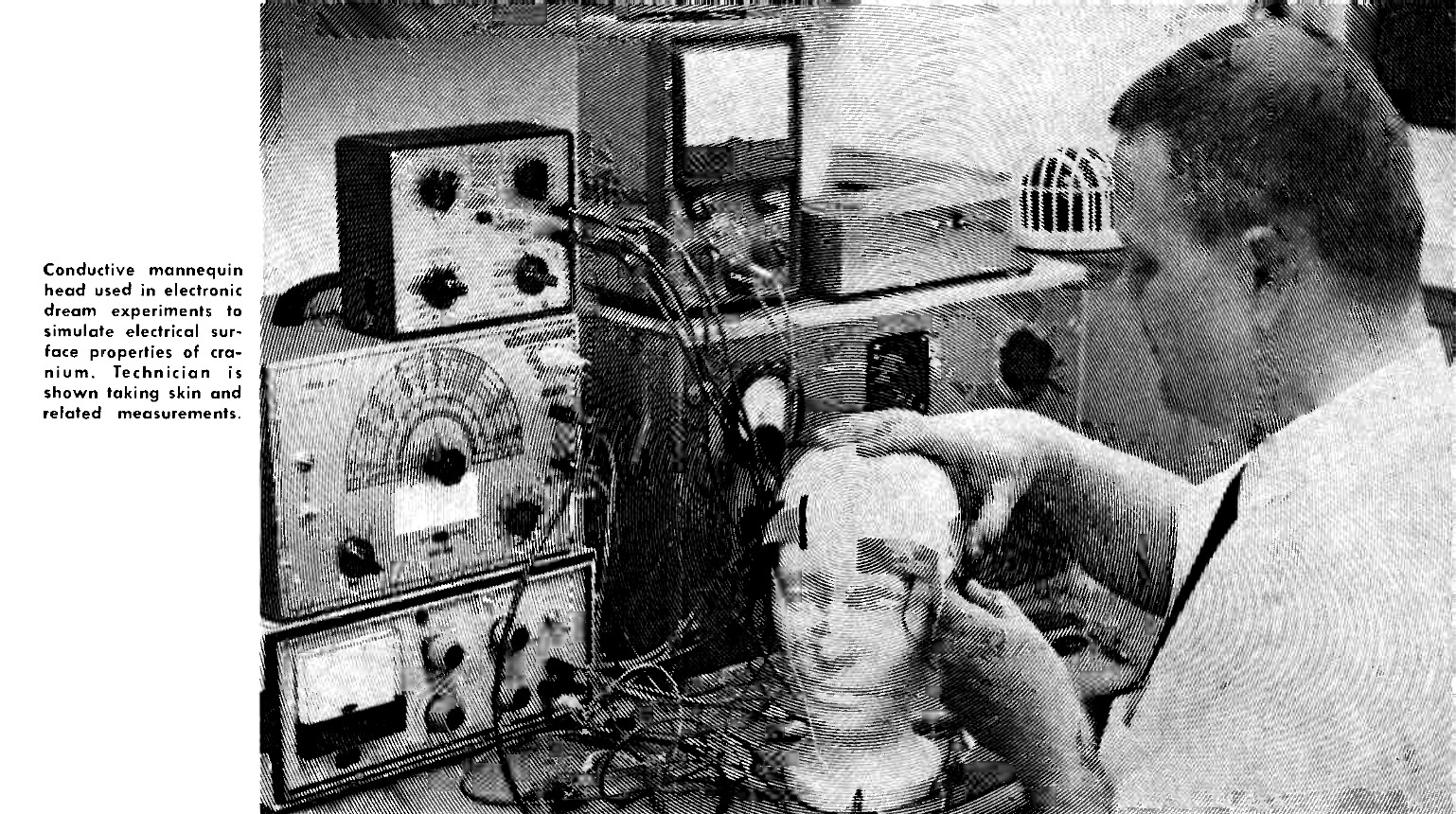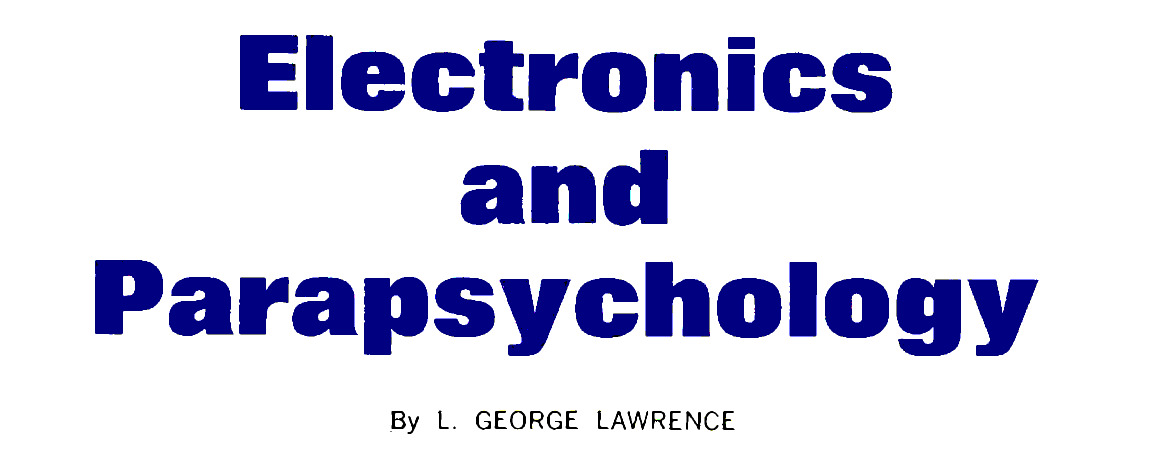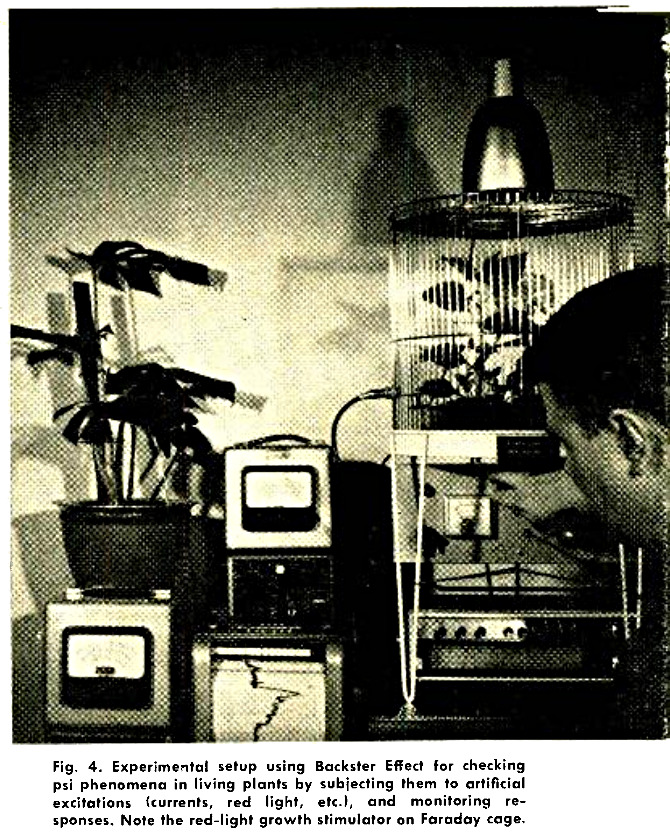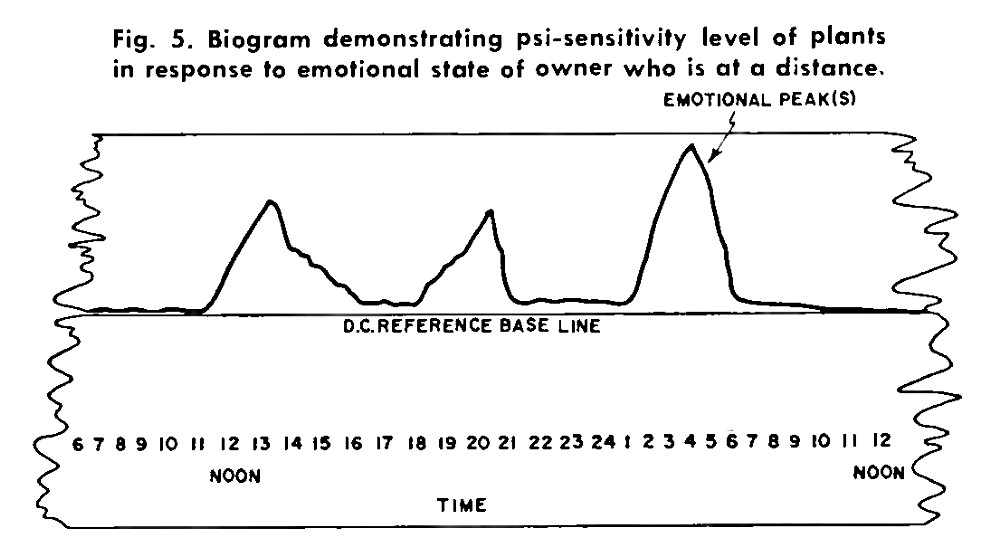

Does man possess latent psi-sensitivities that have been stifled by modern communications systems? Parapsychology, an aspiring science using modern electronic methods, has been working to unleash this "natural" ability in man.
PARAPSYCHOLOGY, or psychic research, deals with the world of "psi." Extrasensory perception (ESP), psychokinesis (PK), and other mind-based phenomena are its way stations. Long suspect because of an occult background, the field continues to fight for a secure place among the accepted sciences; but some progress has been made. Today, the application of electronic instruments to this unique area has permitted dramatic experiments and brought forth a few stunning discoveries of excellent promise, which has prompted those most active in this field to predict that, in time, parapsychological methods might well rival the orthodox communications arts and sciences currently in use. Of course, due caution is suggested.
Its Beginning
Critical experiments in parapsychology started in the second half of the 19th century. The "Society for Psychic Research," founded in 1882 in London, first used scientific methods for its studies, dissociating psychic phenomena from superstition, spiritualism, and the various "mediumships" so fashionable at that time. Later, in 1906, Dr. Duncan MacDougall of Massachusetts General Hospital detected a small loss of weight at the instant of human death. Around 1930, Dr. William McDougall established a research group at Duke University, which attained considerable prominence under Dr. J. B. Rhine. To date, only a handful of university-connected ESP labs exist throughout the world; the oldest is at the State University of Utrecht in Holland, the newest at Andhra University in India. The bulk of research is carried on by interested individuals, private groups, and ad hoc societies.
Concepts
The need for machine systems, capable of testing for ESP and PK in an unbiased, impartial manner, was recognized at an early date. It was the Italian scientist F. Cazzamali who developed, around 1923, a u.h.f.-type of apparatus for testing human telepathy.

As shown in Fig. 1, Cazzamali placed his human subjects inside a Faraday cage and claimed that some of these individuals could produce r.f.-beat pulses when undergoing emotional stimulation of the brain. Since v.h.f./u.h.f. techniques were rather crude, it is open to conjecture whether this purported "brain radiation" was heterodyning with fundamental frequencies between 60 and 400 MHz of the local oscillator or interacting with more or less high harmonics. Unfortunately, Cazzamali's experiments have never been repeated in depth. It is believed that his last paper appeared in 1941, at which time Benito Mussolini (Italian premier and dictator from 1922 to 1945) declared the work secret.
But, of course, progress never stops. A somewhat strange offspring of Cazzamali's ideas and machinery is the "Integratron" designed by UFO-man G. W. Van Tassel. The apparatus, located at Yucca Valley, California, promises such wonders as rejuvenation of older people's body cells, anti-gravity, and the epitome of psychic ecstasies - time travel.
These two basic examples might have shown, perhaps, that parapsychology's instrumentation phase has two faces: hard-core science at one side, science-fiction type concepts at the other. But the psi-phenomena do persist and can be verified.
Recent Experiments
At the research center of Rockland State Hospital, N.Y., scientists used instruments linked to a computer to record EEG, changes in blood volume in a finger, and heart rate. The human subjects (in this instance, husband and wife) were placed in separate rooms and subjected to emotional stimuli. When, for example, the husband was shown a projected picture of his ex-fiancée (Fig. 2), the record of his emotional response was matched on the wife's tracings, even though her projection screen was blank. As Dr. Esser, the principal investigator points out, only a very few people have this bond. He also reports that alpha waves (brain waves) in identical twins are synchronized. This ties in with the odd observation that twins frequently have an almost identical psychic life.
Owing to the uniqueness of such and related happenings, researchers are hard pressed to come forth with some kind of working theory. This leads to a consideration of the hypotheses evolved by both Drs. Roll and Wassermann, among others.
Here, W. G. Roll's concept of "psi-fields" is analogous to electromagnetic or gravitional fields, supposing that all objects, whether organic or inorganic (i.e., nonliving), possess such fields. Psi-fields are seen as interacting with known physical fields and with each other, giving rise to phenomena at both animate and inanimate matter systems.
G. D. Wassermann, on the other hand, relates his postulates to quantum mechanics. Psi-fields, which enable individuals to have paranormal experiences, are regarded as having "very narrowly spaced energy levels" and "occupy wide regions of space." Thus, according to Wassermann, psi-fields emit and receive "extremely small quanta of energy" - typically smaller than quanta which can be absorbed by matter fields of classical physics.
Various efforts have been made to prove these hypotheses. An instrument for this purpose is the color centrifuge shown in Fig. 3. The device consists of an electric motor activated for a fraction of a second by pushbutton and a high-voltage field exciter. A paper card, upon which there are deposited a few drops of paint of different colors, is spun by the motor's disk. The entire assembly is housed in a transparent vacuum vessel.
To use this equipment as a psi-confirming aid, the experimenter concentrates on the image on a separate card and directs his thoughts upon the card in a centrifuge. With the paint in place and the motor energized, the machinery should now produce an identical or quasi-identical image of the original. This appears to work with some people and may be classified as telepathic/psychokinetic, since thought triggered a mechanistic replica.
Psi-type work of this kind ties in with experiments in the "dream" area. At the Maimonides Medical Center in Brooklyn, for example, it appears that its dream laboratory was able to induce mental images telepathically in sleeping persons by an "agent" located in another room, about 100 feet away. The transmitting person, the agent, concentrates on a picture chosen from a group of famous paintings and tries to direct this thought-image at a sleeper. The lab was established in 1962 and, according to Drs. M. Ullman and S. Krippner, results have been good.
Dream-type work apparently has much promise for electronics, since sleep itself can be induced by electronic pulse generators. No standards can be fixed at this time, since different people have much different susceptance to artificial pulse trains.
Attempts at inducing dreams by purely electronic methods are stifled by the fact that there are no "bulk" picture transmitters available. TV-type video signals are unpleasant to induce and sensations are restricted to a "feel" of the low-frequency vertical blanking pulses.
But even if the transmission mode could be solved, a number of parallel problems require major attention as well. Exterior and interior conduction properties of the human cranium apparently are much more complex than suspected. Sweat, for example, is a highly conductive agent which causes odd current paths and spread patterns. Skin and related measurements, as shown in the lead photo of this article, can be made by simulating the cranium's exterior with conductive mannequin heads. Although respective data can be valuable, questions attached to the explicit propagation of dream-provoking electronic signals towards given receptor and processing areas within the human brain remain unanswered.
Paranormal Matrix
Dr. Gardner Murphy, recognized as a psychologist of distinction, is a prolific contributor to parapsychology. He suggested the idea that man's failure to use interpersonal psi communications frequently may be due to our "psychological insulation" from one another. To that end, others see electronics-based communications as an awkward crutch and primitive substitute for latent, natural abilities. However, the lack of performance at psi-type levels can also be understood as Nature's safeguard against devastating telepathic impact. Otherwise, the world of man would function like an untuned radio receiver - too many messages would trigger chaos, intelligent action become impossible.
These considerations, taken together, have invited a search for discriminating devices and specific mind-intercoupling agents.


One of the most intriguing things to emerge in that area is the now-famous Backster Effect (ELECTRONICS WORLD, October, 1969: "Electronics and the Living Plant"). Here, since living plants seem to react bio-electrically to thought-images directed at their over-all well-being, New Jersey cytologist Dr. H. Miller thinks that the phenomenon is based upon a type of "cellular consciousness."
These and related considerations lead to the idea that psi is but a part of a so-called "paranormal matrix " - a unique communications grid that binds all life together. Its phenomena apparently work on a multi-input basis which operates beyond the known physical laws.
Some of these constituents can be seen in highly refined experiments of the Backster type. For example, a variety of electronic systems is employed to furnish pure audio tones, music, red light (as a growth stimulant), and excitation currents to the plants (Fig. 4). This provides the specimen with an emphatic "work psychology" or environment which can be disturbed for data-gathering purposes after lengthy conditioning.
To that end, psi-sensitivity can reach such a highly cultivated level whereby a plant (in our example) reacts to its owner's state of mind emotionally - even while he is far away. The data is expressed, of course, in the form of an electronically derived and processed biogram which is supplied with time markers for identification purposes, as shown in Fig. 5.
Conclusion
Only a small family of experimental systems and approaches could be described. The field is complex, quite strange in many ways, but wide open for improvement. Indeed, as it appears from here, there is enough promise to warrant intensified research efforts. From an educational point of view, it's also necessary for investigators to look beyond their specialties and acquire more background knowledge in order to do meaningful work in a field such as this.
REFERENCES
- Rao, K. R.: "Experimental Parapsychology." C. C. Thomas, Springfield, Ill., 1966.
- Ed.: "ESP: More Science, Less Mysticism," Medical World News, 10:12, 20-21, March 21, 1969.
- MacDougall, D.: "Journal of the American Society for Psychical Research," May, 1907. <http://aspr.com>
- Roll, W. G.: "The Psi Field." Presidential Address, 7th Annual Convention Parapsych. Association, Oxford U., England, 1964.
- Wassermann, G. D. in Ciba Foundation Symposium ESP, Little Brown, Boston, 1956.
Originally published in "Electronics World" (April 1970). Browse AmericanRadioHistory.com for complete issues of P.E. and many other historical radio and electrical publications in PDF format.
Return to the BIO-ICOMM Project homepage or the Bibliography of L. George Lawrence.
